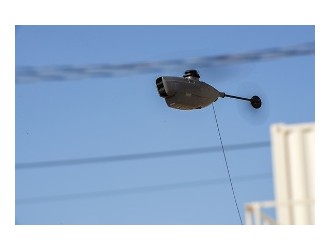TTF NEWS:
By MIKE PURPURA
If you decide to land on a private airstrip and you damage your airplane, who is liable?
What if you are invited to land on a private strip and you bend something on your plane: Who is liable then?

In the early days of aviation, emergency landings were common. Fortunately there was more farmland and open space than cities. When an early aviator was forced to “dro in” unexpectedly, they were most likely welcomed with pie and coffee.
It is different now. The airspace is
crowded, and sometimes you can’t avoid flying over highly populated areas.
But airplanes are reliable and we don’t worry too much about havin to
make an emergency landing. We just have to be on the lookout for a spot just in
case the unthinkable happens.
That’s why those little circles on the sectional, the ones with the “R” inside, are so important.
Each one is a private strip carved out of a farm, forest, or rangeland. Those circles depict 2,000 to 3,000 feet of green carpet waiting to catch you when your airplane is turned into a glider.
These restricted airstrips are a possible resource to all of us who fly light aircraft.
The landowners who build and maintain these strips share a common interest in aviation, and likely own an airplane and use it. For example, in a 150-square-mile chunk of northern Illinois, I counted 21 private airstrips and three public airstrips.
But sometimes the private fields are tough to spot from the air — especially in the Midwest wher everything is green.
But say you are faced with a forced landing and spot one from the air.

If you land without prior permission, like in an emergency, the landowner is protected from liability as if you were a trespasser.
But what if permission has been granted? All states have Recreational Use Statutes (RUS) that deal with liability issues in favor of the landowner. Typically, they give liability protection to landowners even when permission is granted for non-commercial, recreational purposes.
Many states define the recreational uses, such as bird watching, hunting, snowmobiling, etc. Other states contain a broad and inclusive definition that covers all recreational activities, including aviation.
Essentially these statutes place the risk on the person enjoying the activity — that means the pilot.
Of course, the landowner must not act negligently or “with malicious intent,” which nullifies liability protection.

Landowners may allow hunters on their land
to eliminate pests. Or just to be a good neighbor and share their land with
others. The intent of these statutes is to relieve them of liability so that
they an offer their land for recreational use.
It is a win for all parties. People in states like Illinois — and in many
eastern states with very little public land — benefit greatly since more land
is available for recreation.
The Recreational Aviation Foundation (RAF) has made it a priority to have
“aviation” included in many state’s RUS to clarify the limits of liability. The
ultimate objective is for landowners to feel more comfortable allowing pilots
to use their airstrips.
So, the next time you are planning a leisurely flight, find a little circle
with an “R” in the middle, look up the owner and give him or her a call.
Introduce yourself and get to know them, especially if you fly in the area
often.
If you should get an invitation to visit, take them up on it. Pick up a box of
doughnuts and go meet a fellow aviator. You will enjoy the experience.
If you decide to land and introduce yourself, be courteous, extend your hand
and say thanks for maintaining a safe place to land.
When you fly out west, wher there is an abundance of public land, you’ll see a
combination of private and public airstrips, some of which are supported by the
RAF in its ongoing effort to preserve, maintain and create public use
recreational and backcountry airstrips nationwide. These strips are there for
you to enjoy and you will see some eye-popping scenery.
Want to know more? Contact the RAF for more information on airstrips and
recreational use. And consider joining the RAF. Think of it as investing in a
safe and desirable place to land.





